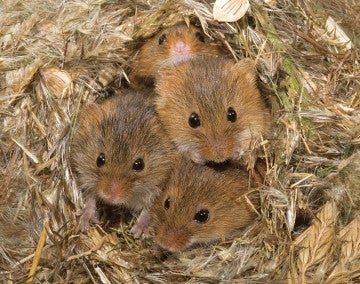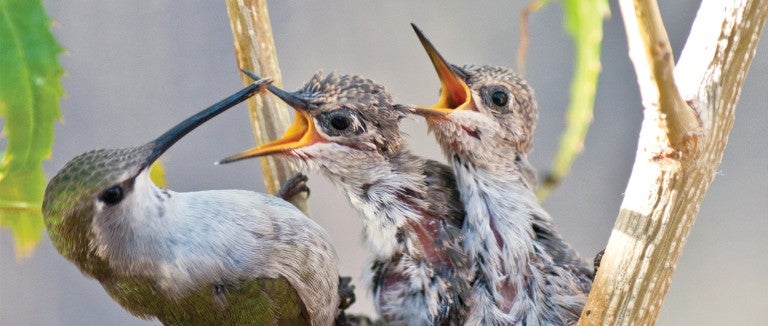Want to help fireflies? Be kind to moles. Interested in nurturing habitats for bees and butterflies? Welcome mice, squirrels, deer, beetles and wasps. Want to see more birds? Make sure you have a haven for spiders.
To those who view certain lesser-loved animals as garden destroyers, such advice might sound counterintuitive. Everyone likes a butterfly and bird oasis, but how often do we hear someone say they want to share space with rodents, snakes and flies?
Though gardening guides and gurus brim with advice for helping pollinators, they typically neglect the contributions of many other wild neighbors. Some even recommend excluding them altogether. Perhaps not surprisingly, our culture celebrates stories of habitat creators in far-flung places while often suppressing such interconnectedness close to home; humans seem to have an easier time appreciating the wonders of animals in the abstract. News of research showing that elephant footprints create pools for frogs overseas is more likely to inspire admiration than the thought of deer trails spreading valuable seeds and enriching soil in our own backyards. Books about how beavers restore wetlands earn accolades while the hard work of other land sculptors, such as groundhogs whose hospitable burrows shelter everyone from turtles to foxes, goes ignored.
Through careful observation and humane gardening, it doesn’t take long to see that many animals shape homelands for creatures large and small, often in hidden ways.
How squirrels, mice and deer help provide homes for bees
The image of imported bees living in manufactured hives looms large in the North American psyche, but honeybee lifestyles would be unrecognizable to the continent’s 4,000 other bee species. Native bees rarely sting and have decidedly less fancy accommodations. For queen bumblebees, who seek pre-made spots to start colonies, there’s nothing cozier than an abandoned mouse or squirrel nest or a burrow dug by a chipmunk. Making room for these rodents not only helps important pollinators, but it also nurtures the plants they depend on. Digging and tunneling activities of small mammals help seed trees and disperse mycorrhizal fungi critical to plant growth.
Unlike bumblebees, most other bees are solitary nesters. Many excavate tiny holes in the ground, but about 30% rely on twigs, stalks and holes in dead wood. Stalks must be broken, though, for cavity-nesting bees to access them. Who better to make such a cut than deer meandering through the garden and browsing woody stems in the winter? Bees who nest in stumps or logs rely on the handiwork of other underappreciated animals: beetles feasting on rotting wood. Some bees get even more inventive; mason and leafcutter bees are known to use abandoned tubes created by organ pipe mud dauber wasps, who, like most wasps, are solitary insects and harmless to people.


How moles and beetles help fireflies and butterflies
Fireflies light up my front yard each summer now, thanks to an unexpected partnership with moles. Their earth-moving skills far surpass those of grading machines used to flatten land for human homes. As the small hills of excavated soil settle, the land gently undulates, creating just enough of a rise to allow mosses to grow unfettered by fallen leaves from the maples above. The newly carpeted molehills, in turn, draw fireflies, who lay their eggs in mosses, dead wood and other moist spots.
While the moles’ subterranean efforts create habitat for fireflies, tiny flea beetles make their appearance above ground to nibble on leaves, inadvertently helping a beloved butterfly. Recent discoveries have shown that adult monarchs don’t just visit flowers; they also extract alkaloids from dried leaves of a number of different plants, likely for use in their defenses. But they can’t detect these compounds unless plants are wilting or injured, releasing a scent as cell walls start to break down. Enter the flea beetles, whose plant-eating ways send invisible signals to the butterflies.
How bears and spiders help plants, birds and other wildlife
In Western habitats, the dietary preferences of a much larger animal, the black bear, also make habitat for butterflies and other wildlife. The story starts with treehoppers, tiny insects who suck sap from rabbitbrush, a flowering shrub, and excrete the excess as honeydew. Ants love honeydew and safeguard its producers by preying on treehoppers’ predators, including crab spiders and lady beetles. Without their natural controls, treehoppers might then proliferate and devour rabbitbrush. But bears come to the rescue, snacking on ants and sending their well-organized protection service into disarray. Freed from the hungry mouths of so many treehoppers, the rabbitbrush thrives, feeding and sheltering pollinators, elk, antelopes, sage grouse, jackrabbits and others.
Like ants, spiders are also on constant insect patrol. But they contribute to habitat in more surprising ways. Aside from serving as an important food source for baby birds, they give presents to hummingbird moms, who weave their nests together with spider webs and camouflage these tiny masterpieces with lichen plucked from trees.
Our wild neighbors are infinitely creative and less discriminating than we are. To their eyes and ears and noses and antennae, everything is potential habitat. By slowing down, shedding our biases and watching these unlikely collaborations, we can learn how to nurture lasting habitat, far beyond what any guide can convey. It often involves little more than just getting out of the way and letting the animals have their say.
Want more content like this?
This was written and produced by the team behind All Animals, our award-winning magazine. Each issue is packed with inspiring stories about how we are changing the world for animals together.
Learn MoreSubscribe
